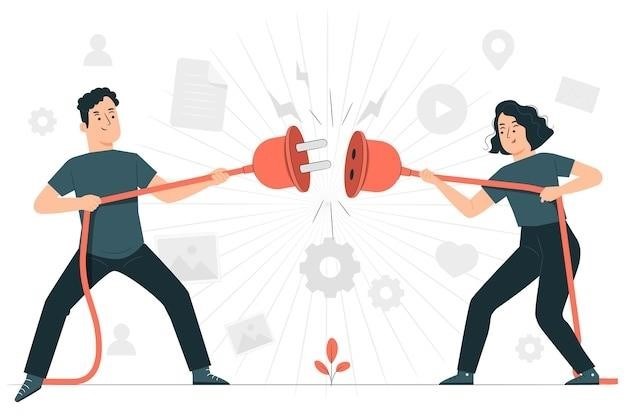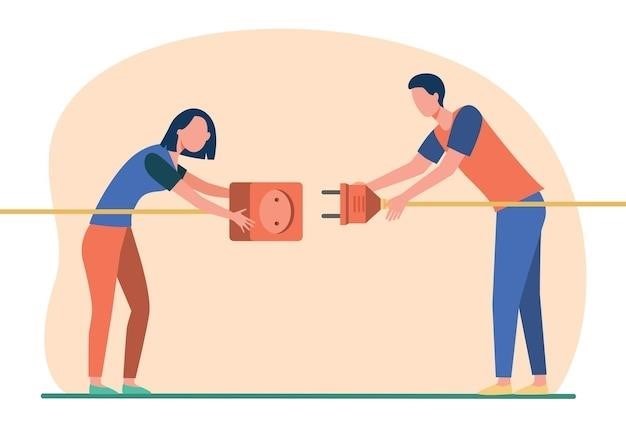electric vs manual choke

Electric vs. Manual Choke⁚ A Comprehensive Guide
This guide will delve into the world of engine chokes, comparing and contrasting the electric and manual choke systems. We’ll explore the advantages and disadvantages of each type, helping you make an informed decision for your vehicle.
Introduction
In the realm of internal combustion engines, the choke plays a crucial role in ensuring smooth cold starts. This vital component, often overlooked by many, is responsible for enriching the air-fuel mixture during those frigid mornings. For decades, there have been two primary types of choke systems⁚ manual and electric. The manual choke, a tried-and-true method, requires the driver’s intervention to adjust the air intake, while the electric choke relies on a temperature-sensitive mechanism for automatic control. This comprehensive guide will unravel the intricacies of each system, exploring their respective advantages and disadvantages, ultimately assisting you in choosing the optimal option for your vehicle.
What is a Choke?
A choke is a device found in carburetor-equipped engines, primarily responsible for enriching the air-fuel mixture during cold starts. When an engine is cold, the fuel vaporizes less readily, making it difficult to ignite properly. The choke restricts the flow of air into the carburetor, effectively increasing the fuel-to-air ratio. This richer mixture is easier to ignite, allowing the engine to start and run smoothly until it warms up. As the engine temperature rises, the choke gradually opens, allowing more air to enter and restoring the normal air-fuel ratio for efficient combustion. The choke mechanism can be either manually controlled or electrically operated, each with its own set of advantages and disadvantages.

How Does a Choke Work?
The choke’s primary function is to regulate the amount of air entering the carburetor, ultimately affecting the air-fuel mixture. In essence, it acts as a throttle for the air intake, controlling the richness of the mixture; When the choke is engaged, it partially restricts the airflow, creating a denser, richer mixture that’s easier to ignite in cold conditions. As the engine warms up, the choke gradually opens, allowing more air to enter the carburetor. This gradual opening restores the optimal air-fuel ratio for efficient combustion at operating temperatures. The mechanism for this process varies between manual and electric chokes, with each system employing different methods to achieve the desired air restriction and gradual opening.
Manual Choke
The manual choke, a classic feature in older vehicles, relies on a cable connected to a lever located on the dashboard. Pulling the choke lever partially closes a butterfly valve inside the carburetor, restricting airflow and enriching the fuel mixture. This manual control gives the driver direct control over the choke’s operation, allowing for fine-tuning of the air-fuel ratio during cold starts. The driver can gradually open the choke as the engine warms up, adjusting the mixture to achieve optimal performance. A manual choke offers a simple and straightforward approach to cold starting, relying solely on the driver’s judgment and experience. However, its effectiveness depends on the driver’s ability to accurately assess the engine’s temperature and adjust the choke accordingly.
Advantages of a Manual Choke
Manual chokes offer several benefits, making them a popular choice for many car enthusiasts and mechanics. One significant advantage is the driver’s direct control over the air-fuel mixture during cold starts. This allows for precise adjustments to ensure smooth engine operation and prevent stalling, particularly in colder climates. Manual chokes are also relatively inexpensive, making them a cost-effective option compared to their electric counterparts. The simplicity of their design means fewer parts and less likelihood of malfunction, contributing to their reliability. For those who prefer a more hands-on approach to vehicle maintenance, the manual choke provides a tangible connection to the engine’s operation, allowing for a deeper understanding of its workings.
Disadvantages of a Manual Choke
While manual chokes offer advantages, they also come with drawbacks. One major disadvantage is the need for the driver to manually adjust the choke, requiring them to be aware of the engine’s temperature and adjust accordingly. This can be inconvenient, especially in situations where quick starts are needed or in cold weather conditions. Another downside is the physical connection between the choke lever and the carburetor, which may require routing a cable through the firewall, potentially creating a less aesthetically pleasing installation. This cable can also wear or become damaged over time, requiring replacement and maintenance. While manual chokes are known for their simplicity, this simplicity can also mean a lack of fine-tuning, making it difficult to achieve optimal engine performance under all conditions.
Electric Choke
Electric chokes, often referred to as automatic chokes, are a more modern alternative to manual chokes. These systems utilize a bimetallic spring that responds to changes in engine temperature. As the engine warms up, the bimetallic spring expands, gradually opening the choke plate and reducing the amount of fuel entering the engine. This process is controlled by an electric circuit that heats the spring, allowing for a smoother and more precise adjustment of the air-fuel mixture. Electric chokes are typically integrated into the carburetor, eliminating the need for a separate choke cable and lever, resulting in a cleaner and more streamlined installation. They often use a thermostatic switch that senses the engine’s temperature and activates the choke when needed. Electric chokes can also be controlled by the engine control unit (ECU) in modern vehicles, allowing for more precise adjustments based on various factors like engine load and environmental conditions.
Advantages of an Electric Choke
Electric chokes offer several advantages over their manual counterparts, making them a popular choice for many drivers. One key benefit is their convenience. Unlike manual chokes, which require the driver to manually adjust the choke lever, electric chokes operate automatically, eliminating the need for any driver input. This can be particularly beneficial in cold weather, as it simplifies the starting process. Another advantage is their precision. Electric chokes utilize a thermostatic switch or ECU control to precisely adjust the choke plate opening based on engine temperature, ensuring optimal air-fuel mixture for efficient combustion. This results in a smoother idle and improved fuel efficiency, especially during cold starts. Electric chokes are also known for their reliability, as they have fewer moving parts compared to manual chokes, reducing the risk of malfunctions.
Disadvantages of an Electric Choke
While electric chokes offer numerous advantages, they also come with a few drawbacks that some drivers find problematic. One major concern is their susceptibility to malfunctions. Electric chokes rely on electrical components that can fail over time, leading to starting issues or inconsistent idle speeds. This can be frustrating for drivers, especially in cold weather when a properly functioning choke is crucial. Another disadvantage is the potential for increased complexity. Electric chokes require additional wiring and may necessitate the use of a relay, adding to the overall complexity of the engine system. This can make troubleshooting more challenging for those unfamiliar with electrical systems. Additionally, some argue that electric chokes can be less responsive than manual chokes, especially in situations where the engine temperature fluctuates quickly. This can result in a slightly rougher idle or delayed warm-up times.
Electric vs. Manual Choke⁚ Which is Better?

The choice between an electric and manual choke ultimately depends on individual preferences and the specific needs of your vehicle. Electric chokes offer convenience and automatic operation, making them ideal for drivers who prioritize ease of use. They are also typically preferred for vehicles that are frequently driven in cold weather, as they ensure a smooth start even in freezing temperatures. However, manual chokes provide greater control and are less prone to malfunctions, making them attractive to those who prefer a more hands-on approach. Manual chokes are also generally more affordable than their electric counterparts. Ultimately, the best choice comes down to weighing the pros and cons of each system and considering your personal driving habits and the climate in which you live.
Factors to Consider When Choosing
When deciding between an electric and manual choke, several factors should be considered. Firstly, the climate in which you live is a crucial factor. If you reside in a region with frequent cold weather, an electric choke may be a better choice as it automatically adjusts to temperature changes, ensuring a smooth start even in freezing conditions. However, if you live in a warmer climate, a manual choke may suffice, providing you with greater control over the air-fuel mixture. Secondly, consider your personal preferences. Do you prefer the convenience of automatic operation or the hands-on control of a manual choke? Thirdly, the type of vehicle you own and its intended use can also influence your decision. For example, a classic car enthusiast might prefer the authenticity of a manual choke, while a daily driver might prioritize the convenience of an electric choke. Finally, budget can play a role, as manual chokes are generally less expensive than electric chokes. By carefully weighing these factors, you can choose the choke system that best suits your needs and driving style.
The choice between an electric and manual choke ultimately boils down to personal preference and specific driving needs. Both systems have their merits and drawbacks. Electric chokes offer convenience and automatic operation, making them ideal for drivers who prioritize ease of use, especially in colder climates. However, their complexity can lead to potential malfunctions, and they may not provide the same level of control as a manual choke. On the other hand, manual chokes offer greater control and simplicity, making them a popular choice for those who appreciate hands-on adjustments and prefer a more traditional approach. They are also generally more affordable than electric chokes. Ultimately, the best choice depends on the specific needs of the driver and the vehicle. By carefully weighing the advantages and disadvantages of each system, you can make an informed decision that ensures smooth starting and optimal engine performance.